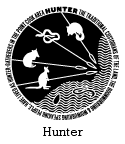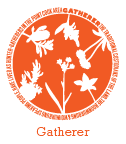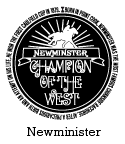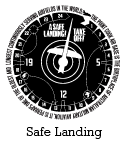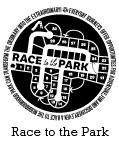Coastal banksia | Banksia intergrifolia
The local Indigenous people extracted sweet nectar from the flower heads of coastal banksia trees.
Flower heads were placed in tarnuks (wooden drinking containers), where they were ground up and mixed with water to make sweet drinks. Consuming too much nectar would cause a headache. The fruiting bodies were used as hair brushes while the banksia wood was used to make tools for weaving baskets and mats.
Murnong or Yam-daisy | Microseris lanceolata
Murnong is a small plant with a bright yellow daisy-like flower and underground yam-like roots, so it is often referred to as a yam-daisy. It was the most important and popular staple vegetable food for the local Indigenous people and grew in abundance before European settlement.
Although it is a perennial, its tuberous roots are sweetest in spring. After the murnong flowered, Aboriginal women and children dug up the yam-like roots using digging sticks. The act of digging for roots aerated the soil and thinned out the root clumps, encouraging further growth of murnong.
Women gathered large quantities of murnong roots in their string bags or rush baskets. They only collected what they needed, to ensure there was a renewed supply. When murnong was fresh it was eaten raw, otherwise it was roasted in an earth oven.
Milkmaids | Burchardia umbellata
Milkmaid is a small honey-scented lily plant with white flowers. Aboriginal women and children dug up the milkmaids’ crisp and starchy roots in the same way as murnong, using digging sticks. Their long tuberous roots were available all year round. As a root vegetable they were an important part of the Aboriginal diet. Milkmaids were always cooked before they were eaten.
Coast saltbush | Atriplex cinerea
Coast saltbush, also known as grey saltbush, is a dense shrub with separate male and female plants. The female flowers are cream while the male flowers are purplish-green.
Known to survive in harsh environments, coast saltbush has excellent drought and salt tolerance. It derives its name from the fact that it retains salt in its leaves and has a salty taste. Coast saltbush was an important vegetable plant for local Aboriginal people.
Pigface or Karkalla | Carpobrotus rossii
Pigface, also known as karkalla, is a cactus-like groundcover that flowers and produces purplish red edible fruit. It once grew abundantly in the area but with the introduction of hard-hooved animals, such as sheep, most of the succulent plants were destroyed.
During the summer season, local Indigenous people would establish camps along the shore to feast on fruit and seafood. The sweet fruit from pigface was broken off at the base and the pulp and seeds were sucked out. The green leaves were eaten raw as a salad or cooked.
Older pigface plants were used for medicinal purposes to treat cuts and bites.
Tufted bluebells | Wahlenbergia communis
Tufted bluebells are a flowering plant with roots that survive dry conditions. Gathered by local Indigenous women, the tufted bluebells were brought back to the camp to be shared and eaten fresh.
Further Reading
City of Wyndham (2004). Indigenous Flora List of the City of Wyndham 2004.
Museum Victoria (2006). Information Sheet: Aboriginal Plant Use. No. 10319.
Nash, D., (2004). Aboriginal Plant Use in South-eastern Australia, Australian National Botanic Gardens, Acton, ACT.
Presland, G., (2008). The Place for a Village, Musuem Victoria, Melbourne, VIC.
Presland, G., (1994). Aboriginal Melbourne, Penguin Books, Ringwood, VIC.
Zola, N. & B. Gott, (1992). Koorie Plants Koorie People, Koorie Heritage Trust, Melbourne, VIC.
